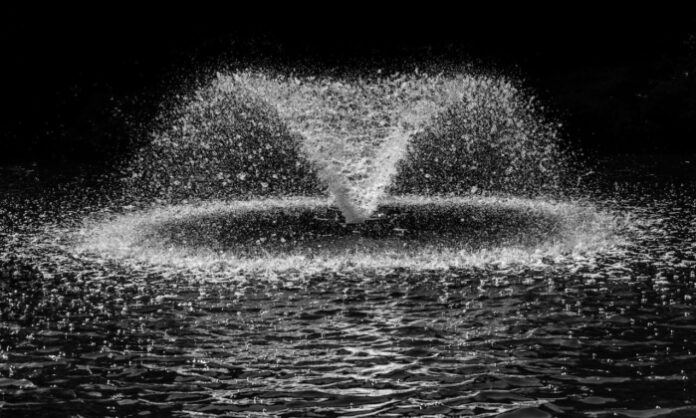A pond pump is an essential feature for maintaining the health and clarity of pond water. It circulates the water through filters and fountains to aerate it and prevent stagnation. Choosing the right pond pump for your fountain is crucial. Available in submersible and external models, these pumps are selected based on factors like pond size, water flow rate, and energy efficiency to ensure optimal operation and enhance the aesthetic appeal of ponds.
Adding a fountain to your pond will enhance the beauty of your garden and improve the health of your aquatic environment. The heart of any fountain is its pump, which circulates water and keeps it aerated. However, selecting the right pond pump can be a daunting task, given the myriad of options available. This guide will walk you through everything you need to know to choose the best pond pump for your fountain, ensuring that it is efficient, durable, and suitable for your needs.
Understanding Pond Pump Basics
Before diving into the specifics, it’s essential to understand the basic functions and types of pond pumps. Pond pumps can be categorized mainly into two types: submersible pumps and external (or inline) pumps.
- Submersible pumps are placed directly in the water and are generally easier to install and maintain. They are ideal for small to medium-sized ponds and operate quietly.
- External pumps are installed outside the pond and are typically used for larger ponds due to their higher efficiency and longer lifespan. They require more complex installation and are noisier but offer easier maintenance and better energy efficiency for larger volumes of water.
Key Factors to Consider
When choosing a pond pump for fountains, several factors should be considered to ensure you select the best option for your setup:
- Pump Size and Water Flow Rate
The size of the pump and its flow rate, measured in gallons per hour (GPH), are critical. A good rule of thumb is to choose a pump that can circulate the entire volume of your pond at least once every two hours. For instance, if you have a 500-gallon pond, you’ll need a pump with a minimum flow rate of 250 GPH. - Head Height
Head height, or the maximum height at which the pump can lift water, is another crucial factor. Measure the vertical distance from the surface of the pond to the highest point of the fountain; your pump’s maximum head height should be higher than this measurement to ensure efficient water flow. - Electrical Efficiency
With rising energy costs, the efficiency of your pond pump is more important than ever. Look for pumps that have an Energy Star rating or those that are known to consume less power while maintaining effective output. - Compatibility with Fountain Type
When choosing the right pond pump, the type of fountain you have dictates the decision. Different fountain designs require different water flow characteristics. For example, a spouting fountain needs a pump that can shoot water upwards, whereas a cascading fountain might need a pump that facilitates a gentle flow. Choosing the right pond pump or fountain can greatly impact the beauty and health of your water feature. To browse a curated selection of high-quality outdoor fountains and accessories, visit Outdoor Fountain Pros. Their collection offers various styles and sizes to suit any outdoor setting.
Installation Tips
Proper installation will be key to maximizing the efficiency and lifespan of your pond pump. Here are some tips to help you get started:
- Place the pump on a flat, stable surface within the pond to prevent vibrations and potential damage.
- Ensure the pump is fully submerged in water to avoid running it dry, which can cause overheating and damage.
- Use a pre-filter to protect the pump from debris and reduce the need for frequent cleaning.
- Check the electrical connections to ensure they are safe and comply with local electrical codes.
Maintenance and Care
Regular maintenance extends the life of your pond pump and ensures it runs efficiently. Clean the pump and its filters regularly to prevent blockages. During winter, if your pond freezes over, it’s advisable to remove the pump and store it in a frost-free location to avoid damage.
Troubleshooting Common Issues
Even the best pumps can encounter problems. Here are a few common issues and their potential fixes:
- Low water flow could be due to a clogged filter or debris in the pump. Regular cleaning should resolve this issue.
- Strange noises might indicate that the pump is running dry or is on an unstable surface.
- The pump not working at all could be due to electrical problems, such as a tripped breaker or a faulty connection.
Conclusion
Choosing the right pond pump for your fountain involves considering various factors, including the size and type of your pond, the design of your fountain, and energy efficiency. By understanding the basics, considering the key factors, and following proper installation and maintenance practices, you can ensure that your fountain works beautifully and efficiently for years to come.
Investing time in selecting the right pump will pay off by enhancing the visual appeal of your garden and the health of your pond’s ecosystem. Whether you opt for a submersible or an external pump, the right choice will bring tranquility and life to your outdoor space.
Find a Home-Based Business to Start-Up >>> Hundreds of Business Listings.
















































